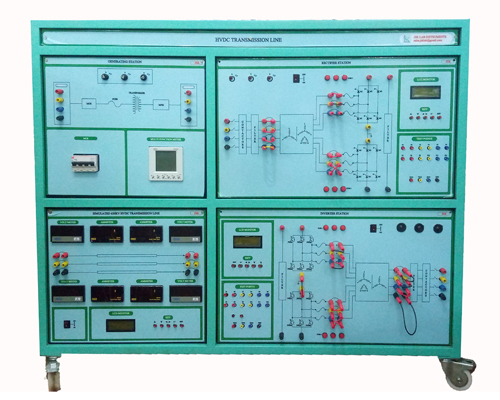HVDC Transmission Lines
A high-voltage, direct current (HVDC) electric power transmission system uses direct current for the bulk transmission of electrical power, in contrast with the more common alternating current (AC) systems.
Unlike an AC transmission line, the voltage and current on a direct current (DC) transmission line are not time-varying, meaning they do not change direction as energy is transmitted. DC electricity is the constant, zero-frequency movement of electrons from an area of negative (-) charge to an area of positive (+) charge.
An HVDCh link is itself asynchronous but it may connect two asynchronous or synchronous AC systems and can be further sub-classified by distance according to whether or not there is a HVDC line or cable between the two converter terminals, as follows. Asynchronous: where HVDC is the only interconnection between two systems with different frequencies, e.g. 50 and 60 Hz, or two systems at nominally the same frequency but with uncontrolled phase relationships. Synchronous: where the HVDC link is used within an AC system or in parallel with an AC interconnection. Long-distance point-to-point interconnections by:
- Overhead line
- Undersea cable
- Underground cable or
- Combination of overhead lines and cables. Zero distance back-to-back interconnections.
Merits of HVDC
The advantages of a DC link over an AC link are:
- A DC link allows power transmission between AC networks with different frequencies or networks, which cannot be synchronized, for other reasons.
- Inductive and capacitive parameters do not limit the transmission capacity or the maximum length of a DC overhead line or cable. The conductor cross-section is fully utilized because there is no skin effect.


